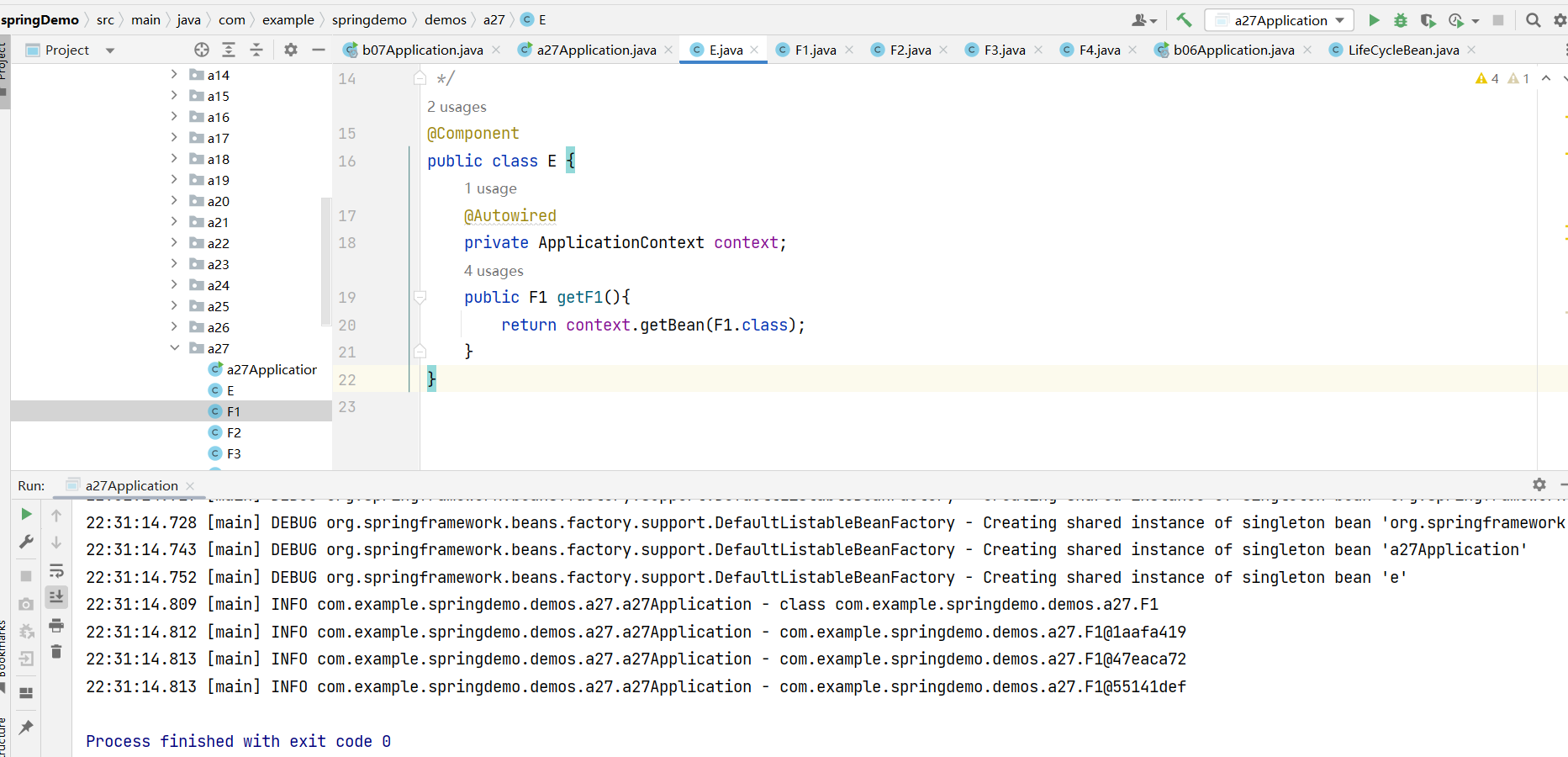@Scope失效问题
单例的Bean注入其它类型的@Scope属性有可能会失效,针对失效的情况,我们可以采取四种解决办法。
一.失效场景
1.准备多例Bean
package com.example.springdemo.demos.a27;import org.springframework.context.annotation.Scope;
import org.springframework.stereotype.Component;/*** @author zhou* @version 1.0* @description TODO* @date 2025/10/15 21:56*/
@Scope("prototype")
@Component
public class F1 {
}
2.E中注入F1
package com.example.springdemo.demos.a27;import org.springframework.beans.factory.annotation.Autowired;
import org.springframework.context.annotation.Lazy;
import org.springframework.stereotype.Component;/*** @author zhou* @version 1.0* @description TODO* @date 2025/10/15 21:56*/
@Component
public class E {@Autowiredprivate F1 f1;public F1 getF1(){return f1;}
}
3.容器中获取对象
package com.example.springdemo.demos.a27;import org.slf4j.Logger;
import org.slf4j.LoggerFactory;
import org.springframework.context.annotation.AnnotationConfigApplicationContext;
import org.springframework.context.annotation.ComponentScan;/*** @author zhou* @version 1.0* @description TODO* @date 2025/10/15 21:54*/
@ComponentScan("com.example.springdemo.demos.a27")
public class a27Application {private static final Logger log = LoggerFactory.getLogger(a27Application.class);public static void main(String[] args) {AnnotationConfigApplicationContext context = new AnnotationConfigApplicationContext(a27Application.class);E e = context.getBean(E.class);log.info("{}",e.getF1().getClass());log.info("{}",e.getF1());log.info("{}",e.getF1());log.info("{}",e.getF1());}
}
结果:
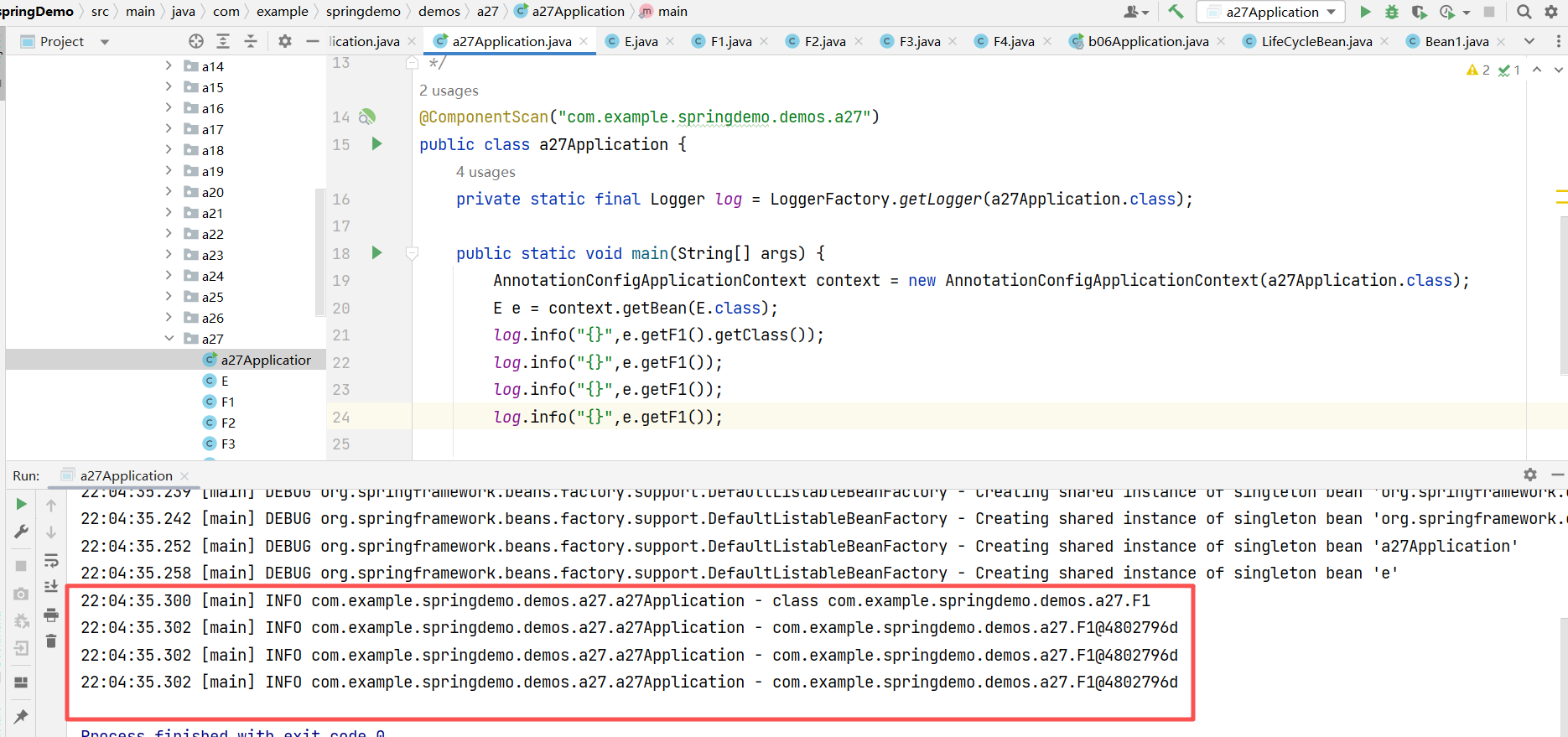
通过依赖注入的F1对象多次获取后都是同一个,Scope作用失效了。分析其原因是对于单例对象E来讲,依赖注入仅仅发生了一次,后续再也没有使用多例的F1,所以多次获取都是同一个对象。
二.解决办法
下面提供四种解决方法。
1.添加@Lazy注解
package com.example.springdemo.demos.a27;import org.springframework.beans.factory.annotation.Autowired;
import org.springframework.context.annotation.Lazy;
import org.springframework.stereotype.Component;/*** @author zhou* @version 1.0* @description TODO* @date 2025/10/15 21:56*/
@Component
public class E {@Lazy@Autowiredprivate F1 f1;public F1 getF1(){return f1;}
}
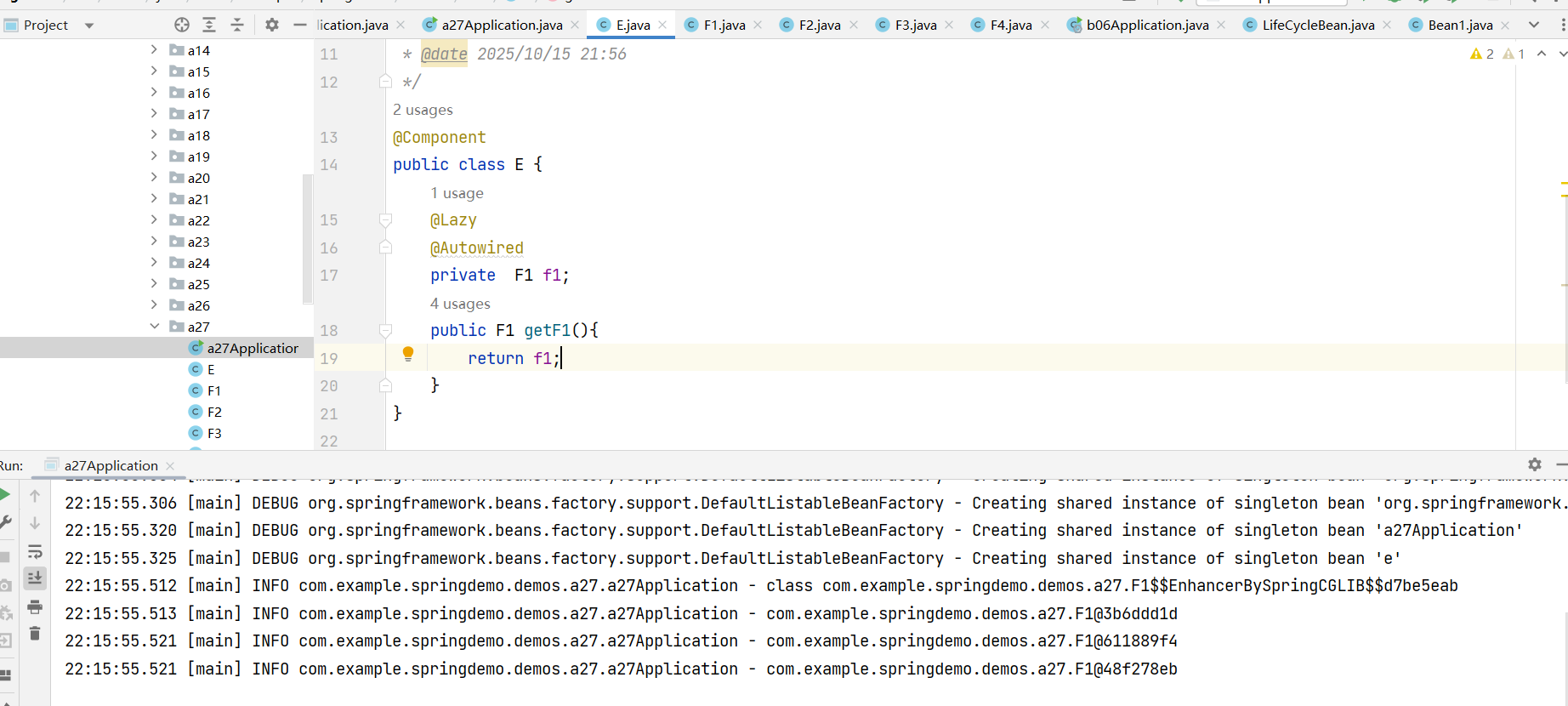
结果每次获取出不同的F1对象。使用@Lazy注解之后,注入便是F1的代理对象(注意看输出的F1对象的类型),e.getF1()使用了F1代理类的toString(),而每次使用代理对象的方法都会创建新的F1对象。
2.在Scope属性中设置proxyMode
设置proxyMode的值为ScopedProxyMode.TARGET_CLASS,可以为F1对象生成代理对象,与上面方法类似。
package com.example.springdemo.demos.a27;import org.springframework.context.annotation.Scope;
import org.springframework.context.annotation.ScopedProxyMode;
import org.springframework.stereotype.Component;/*** @author zhou* @version 1.0* @description TODO* @date 2025/10/15 21:56*/
@Scope(value = "prototype",proxyMode = ScopedProxyMode.TARGET_CLASS)
@Component
public class F1 {
}
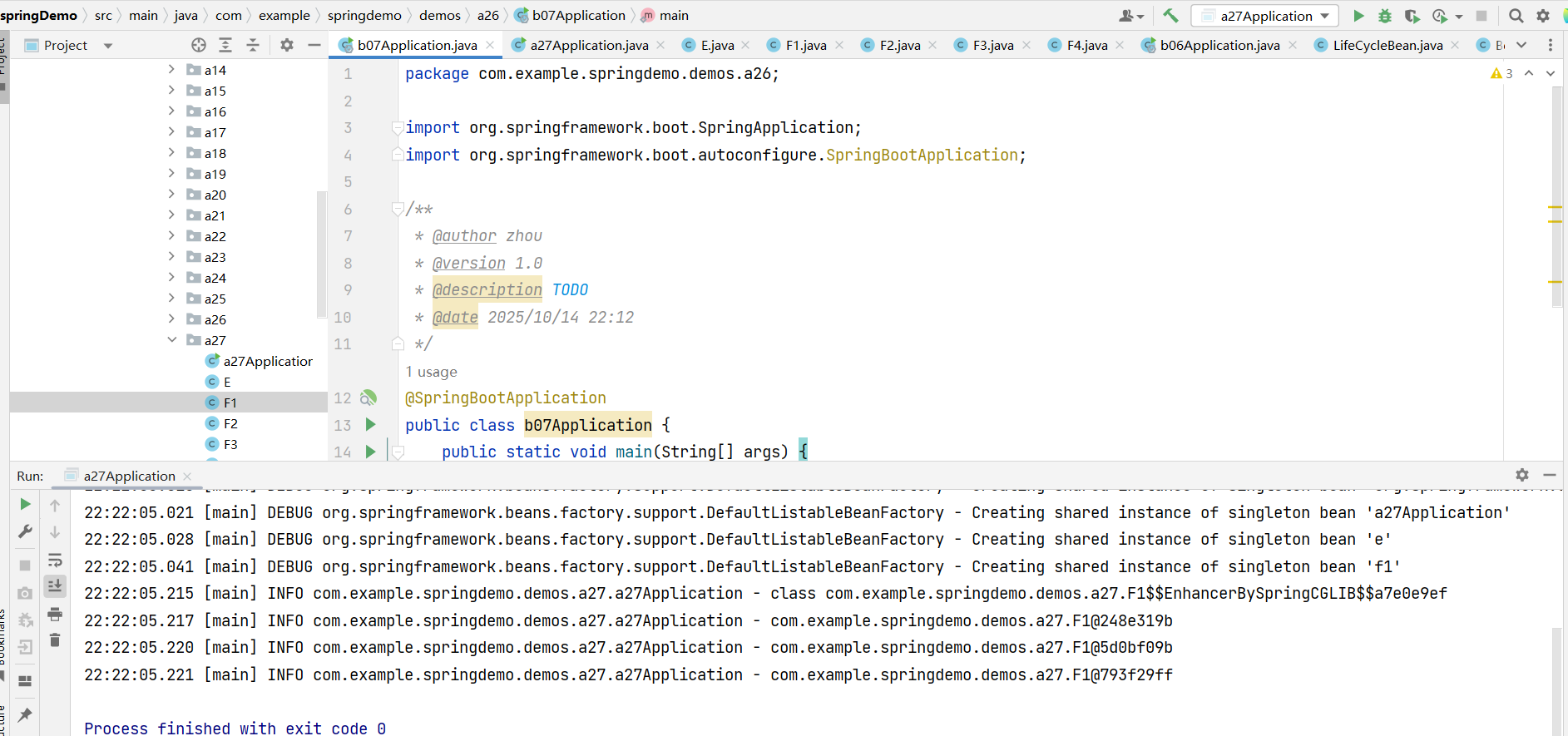
3.使用ObjectFactory包装F1
package com.example.springdemo.demos.a27;import org.springframework.beans.factory.ObjectFactory;
import org.springframework.beans.factory.annotation.Autowired;
import org.springframework.context.annotation.Lazy;
import org.springframework.stereotype.Component;/*** @author zhou* @version 1.0* @description TODO* @date 2025/10/15 21:56*/
@Component
public class E {@Autowiredprivate ObjectFactory<F1> f1;public F1 getF1(){return f1.getObject();}
}
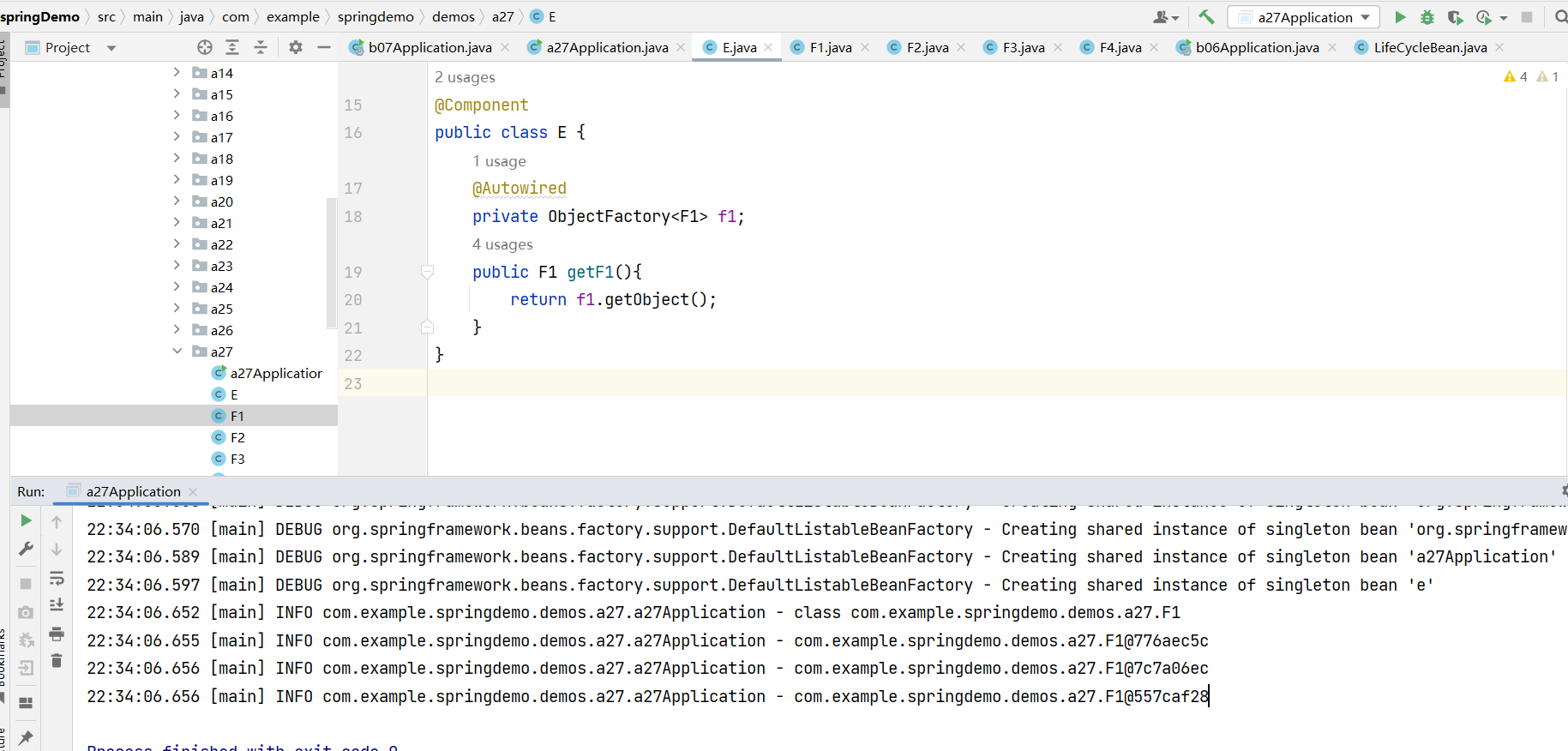
通过这种方式每次获取F1,工厂都可以生成多例对象。
4.注入ApplicationContext容器
每次从容器中获取F1对象自然是多例的。
package com.example.springdemo.demos.a27;import org.springframework.beans.factory.ObjectFactory;
import org.springframework.beans.factory.annotation.Autowired;
import org.springframework.context.ApplicationContext;
import org.springframework.context.annotation.Lazy;
import org.springframework.stereotype.Component;/*** @author zhou* @version 1.0* @description TODO* @date 2025/10/15 21:56*/
@Component
public class E {@Autowiredprivate ApplicationContext context;public F1 getF1(){return context.getBean(F1.class);}
}
